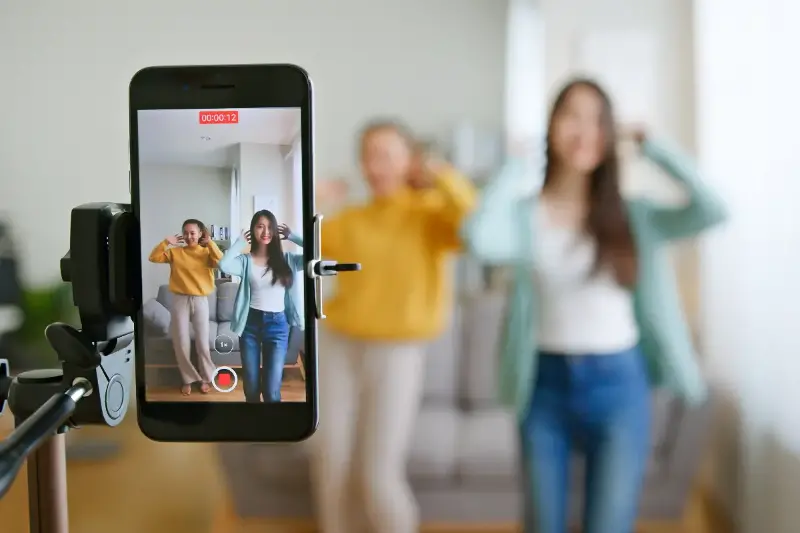In just a handful of years, TikTok, Instagram Reels, Snapchat, and YouTube Shorts have turned the scrolling of bite-sized videos into a global daily ritual. Where once a 10-minute video felt “short,” now content is condensed into dizzying 15-60 second snippets designed to grab attention, spark emotion and vanish with a swipe. Why do these flashes of content keep us hooked? What is happening inside our brains that makes doomscrolling through Shorts and Reels so irresistible? Let’s dive into the science driving this digital craving.

The Irresistible Power of Instant Gratification
Our brains are wired to seek novelty and instantaneous rewards. Each time you tap “next” or refresh your feed for a new Snap, you’re giving your brain a shot of dopamine—nature’s feel-good neurotransmitter.
This chemical reward reinforces the habit, making us crave that tiny rush again and again. Short-form videos deliver this dopamine hit with remarkable efficiency. They’re packed with plot twists, surprises, or laugh-out-loud moments, all within seconds. It’s essentially entertainment engineered for the digital age’s shortest attention spans.
Key reasons why short videos satisfy our craving for instant gratification:
- Quick reward cycles: You don’t wait long for the payoff; the punchline or drama arrives almost immediately.
- Constant novelty: New storylines, visuals, and ideas bombard you with every swipe.
- Minimal effort: Passive watching makes it very accessible, even when you’re tired or multitasking.
How Bite-Sized Media Shapes Attention—and Habits
Research shows the human attention span has shrunk in the digital era, dipping below 8 seconds in some studies. Short-form content both results from and fuels this change.
What happens with repeated exposure to these video fragments?
- Attention fragmentation: Brains adapt to hopping rapidly between topics, making sustained focus harder elsewhere.
- Faster decision fatigue: With so many micro-choices (swipe, skip, like, replay), our cognitive resources deplete more quickly.
- Snap judgments: We learn to size up what’s worth our time in split-seconds—a survival skill online, but a challenge offline.
These changes are not necessarily negative, however. Some neuroscientists suggest that frequent exposure to fast-paced media could enhance visual processing skills and our ability to filter information.

The Creative Genius Behind the “Hook”
Not all short videos go viral—only those engineered with a precise formula. The secret? The first two seconds are everything.
Creators and marketers leverage psychological tricks to snaffle attention:
- Open with a mystery or shock (“Wait for it…”)
- Leverage popular music and memes to trigger an emotional connection
- Use flashing colours, on-screen text, and jump cuts to overwhelm (and engage) senses
It’s no accident when a reel keeps you watching. Algorithms reward not just clicks, but “watch time”—meaning creators design content that’s almost impossible to look away from.
Why We Share, Save, and Replay
Sharing and saving videos isn’t just about passing time—it taps into our deepest social wiring. When content elicits laughter, surprise, or awe, we’re moved to connect with friends through it. Research suggests emotional intensity is a major driver behind viral sharing.
- Endless novelty keeps us coming back for more, while
- Social validation (likes, comments, DMs) keeps us feeling seen
- FOMO (fear of missing out) compels us to check in, just in case we miss the next big thing
The bite-sized format also makes videos easy to send, replay, and remix, lowering the bar for participation in today’s online culture.

Tech’s Role: Algorithms That Know You Better Than You Know Yourself
Artificial intelligence and predictive algorithms are the invisible hands behind your feed. Every interaction—what you swipe, how long you watch, what you rewatch—teaches the algorithm exactly what you want next.
These systems are remarkably effective at learning and predicting your tastes, using:
- Facial recognition to judge what’s on screen
- Acoustic analysis to detect trending sounds
- Behavioural tracking to map even micro-reactions
In the process, your feed becomes uniquely compelling—often more absorbing than any big-screen TV.
Short-form video’s ascendancy is as much about evolving tech as it is about human psychology. As we scroll, swipe, and share, our brains are being gently rewired—adapting to a world where every second counts and every story is fleeting.
Will we grow restless with longer formats, or rediscover a taste for the slow burn? Only time will tell—but one thing’s certain: the science of bite-sized content is here to stay, shaping not only how we consume media, but how we connect and create in a hyper-distracted world. So next time you catch yourself on your fifth consecutive Reel, pause and ask: what’s happening in my brain—and where might the next swipe lead?
